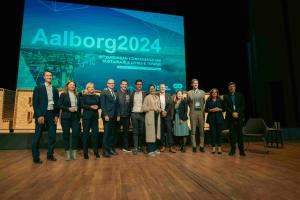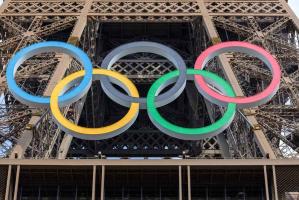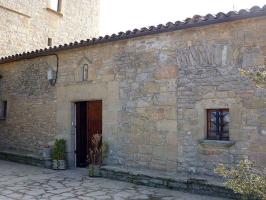Thessaloniki gets ready for its metro launch in November
The underground rapid transit lines have been under construction for almost two decades due to various project delays
 TheMayor.EU logo
TheMayor.EU logo The winner will be either a hospital in Bangladesh, a gallery in Berlin, or a bridge in Copenhagen
On Tuesday, the Royal Institute of British Architects (RIBA) revealed the 3 shortlisted projects which have the chance to win the RIBA International Prize 2021. The prize, according to the institute, seeks to recognise excellence, architectural ambition, and meaningful social impact. Although all three projects are exemplary, only one of them will receive the prestigious prize in 2022.
 The Friendship Hospital (Source: Asif Salman/Courtesy of URBANA via RIBA)
The Friendship Hospital (Source: Asif Salman/Courtesy of URBANA via RIBA)
One of the three shortlisted projects is the work of Kashef Chowdhury/URBANA. More specifically, it is the “Friendship Hospital” in Satkhira, Bangladesh. On its website, the institute reveals the characteristics of this impressive building, noting that it blends naturally into the rural setting and pays homage to the region.
Taking this further, the hospital has intimate courtyards, cross ventilation, and an innovative canal feature. The latter, according to RIBA, separates outpatients from the central areas, collects rainwater, and helps micro-climatic cooling. In other words, it addresses important environmental issues by preventing flooding and providing a way to collect water for drinking.
Beyond this, the hospital has a simple and contemporary design that evokes serenity and calm. This, of course, can be crucial for anxious patients who visit the building seeking medical assistance. Taking all of this into account, RIBA believes that the Friendship Hospital is an “exemplary design for economically challenged communities” as well as a “sustainable, affordable blueprint for other clinical facilities”.
 James-Simon-Galerie (Source: Simon Menges via RIBA)
James-Simon-Galerie (Source: Simon Menges via RIBA)
The second shortlisted project is that of David Chipperfield Architects Berlin. Located on Berlin’s Museum Island, the James-Simon-Galerie is unique in its build quality, detail, and material. The architects followed a project brief that sought the creation of a visitor centre housing a ticket office, café, auditorium, exhibition space, and deliveries, among others. Therefore, the James-Simon-Galerie was supposed to act as a building for front and back of house functions.
However, instead of designing a simple and singular autonomous building, David Chipperfield Architects Berlin created a unique structure with an ambiguous form. Thus, the James-Simon-Galerie serves the main museum buildings, offers new external spaces alongside exceptional indoor areas, and focuses on linking and framing.
 Lille Langebro (Source: Rasmus Hjortshøj via RIBA)
Lille Langebro (Source: Rasmus Hjortshøj via RIBA)
The final project that has impressed RIBA is the Lille Langebro by WilkinsonEyre with Urban Agency. Lille Langebro is a bridge built over a river in Denmark’s capital city. RIBA reports that constructing a new bridge in such a location is a challenging and impressive feat in itself; however, it is the details and use of the Lille Langebro which are even more remarkable.
Built exclusively for cyclists and pedestrians, the Lille Langebro considers the needs of all citizens. More specifically, it is accessible to everyone allowing the elderly and disabled individuals to enjoy time outdoors to admire the city from over the river.
Aside from this, the bridge also allows ships to pass through as the Lille Langebro is located near the city’s harbour. To facilitate the movement of ships, the architects devised an innovative way of moving the bridge. That is, instead of relying on a raised structure with steep gradients, they used two rotating central sections that allow the bridge to turn sideways using minimal energy.
 Lille Langebro allowing a ship to pass through (Source: Rasmus Hjortshøj via RIBA)
Lille Langebro allowing a ship to pass through (Source: Rasmus Hjortshøj via RIBA)
RIBA further reveals that city authorities funded the project in response to the citizen’s needs. This, paired with the bridge’s innovative design, makes Lille Langebro an exemplary project.
“Our global architectural awards champion buildings that change the world and positively impact the community around them - and these three exemplars certainly deliver,” said Simon Allford President of RIBA on Facebook.
To view more photographs of the projects, see the gallery above.

The underground rapid transit lines have been under construction for almost two decades due to various project delays

Now you can get your wine in Talence by paying directly in Bitcoin

That’s because the state has to spend money on updating the railway infrastructure rather than subsidizing the cost of the popular pass

Rethinking renewable energy sources for the urban landscape

The examples, compiled by Beyond Fossil Fuels, can inform and inspire communities and entrepreneurs that still feel trepidation at the prospect of energy transition

Now you can get your wine in Talence by paying directly in Bitcoin

The 10th European Conference on Sustainable Cities and Towns (ESCT) sets the stage for stronger cooperation between the EU, national and local level to fast track Europe's transition to climate neutrality.

At least, that’s the promise made by the mayor of Paris, Anne Hidalgo

The underground rapid transit lines have been under construction for almost two decades due to various project delays

At least, that’s the promise made by the mayor of Paris, Anne Hidalgo

Hostal de Pinós is located in the geographical centre of the autonomous region

Despite its church-y name, the district has long been known as the hangout spot for the artsy crowds

Urban dwellers across the EU are having a say in making their surroundings friendlier to people and the environment.

Forests in the EU can help green the European construction industry and bolster a continent-wide push for architectural improvements.

Apply by 10 November and do your part for the transformation of European public spaces

An interview with the Mayor of a Polish city that seeks to reinvent itself

An interview with the newly elected ICLEI President and Mayor of Malmö

A conversation with the Mayor of Lisbon about the spirit and dimensions of innovation present in the Portuguese capital














